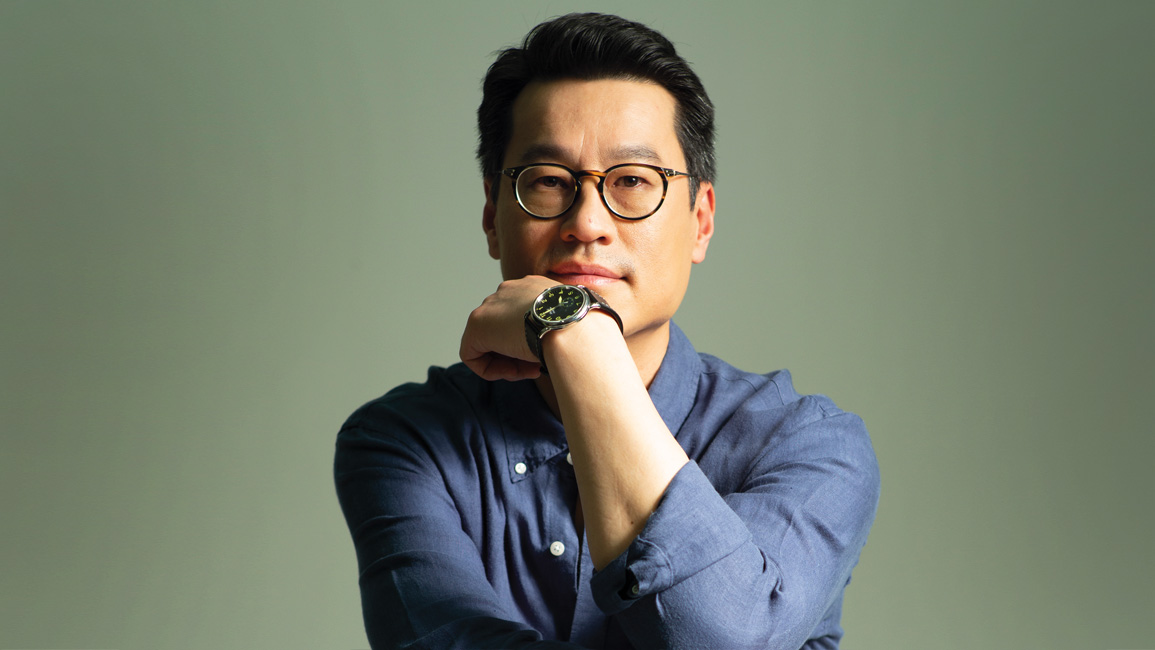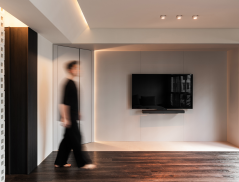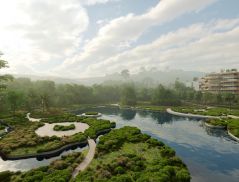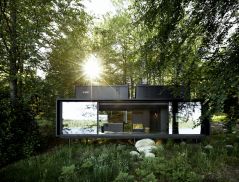
You’ve said that the social role of architecture needs to adapt to new realities. What do you mean?
Reducing impact matters. Using the right materials matters. Engaging responsibly with all the components that bring a building to fruition matters. But is that enough? I think architects and architecture can take a step further – buildings can be teaching tools, which is something to be leveraged in the midst of this crisis. Architecture, by its nature, is public, and it can be a platform for ideas, for impactful experiences and for inspiration. A building can change your perspective literally as well as metaphorically.
If we think about how we can get people to engage with an issue, to care about it enough to make a difference, they need to be intellectually and emotionally moved and in doing so, called to take action. That involves, in part at least, beauty. But it also has to do with proximity. Architects are trained to think about what types of spaces make people feel comfortable, which ones make them feel connected. We need to also consider connecting people to the natural world in a more balanced state of environmental equilibrium, bringing light to the problems and solutions within the world around us.
Furthermore, architecture, by nature of its scale and permanence, has the capacity to offer a viscerally powerful set of experiences. It can tap into some very fundamental human senses (curiosity, wonder, amazement…) and deliver a lasting impact that goes beyond the merely intellectual. If you provide people with a space that utilises the power of architecture to bring awareness of natural beauty, to think beyond our human constructs, to encourage civic participation, you get closer to what the world needs right now.
Can you give an example?
We recently completed the design concept for the Yangtze River Estuary Chinese Nature Preserve, which to me was so much more than just another great design opportunity; it was a way to contribute to the rescue of two endangered species, and restore a small piece of habitat along the Yangtze River. In a larger sense, this project represents a commitment by China to the natural environment; likewise, we believe it reinforces our pledge toward making forward ecological progress and rebalancing humanity’s relationship with nature.
The project embodies an important mission of civic education to increase public consciousness. People are invited in to learn more about the plight of these endangered species, to understand the need to improve their habitat – not least of which by modifying human behavior – and to observe and appreciate the important work this institution does. It raises public awareness of the impact that pollution, shipping, overfishing and construction have on the world’s third longest river.
The architecture draws from biomorphic forms and is conceived as both an ark and a natural landscape, all clearly perceived upon the approach, which is suspended across the surface of an outdoor pool. The visitor experience is spatially rich, despite the great majority of the facility being composed of research and breeding pools, intertwining people with the water and the life within it. This change of perspective grants greater understanding of natural ecology, habitats for wildlife and the interdependence of water with all life. It’s not just about mimicking or interpreting nature, it is about restoring it and building larger public support in the process.
How can buildings educate their users about the changing world?
I think it's important to implement best environmental practices in designing and building – if possible, to also be highly innovative – but additionally to make those features visible and tangible to users and visitors. Within the traditional boundaries of an architectural practice, there are certainly best practices to help minimise environmental detriment and there are a whole range of frameworks and metrics that quantify how much impact we're making, from LEED to Living Building Challenge to Passive House to Net Zero.
There are different baselines one can achieve and then there are ways to expand the conversation on what more can be done. The basic premise of these frameworks is that architects need to quantifiably measure progress. We cannot preach without the proof, and hopefully that proof carries weight for all who witness it.
For one of our current projects, we are making visible the capture of rainwater off the building’s roofs, not only for the purpose of utilising greywater for irrigation on the site, but also to show visitors how water is a precious resource to be treated with care and conservation. We're going to filter the greywater through a constructed wetland as well to ensure it is returned to the natural waterway in a better state than how we found it. It's as much about employing good practices as it is about demonstrating them so people who interface with the work understand these measures. If people understand more about the design features that can make a building work better within its environment, they can start thinking about, and hopefully requesting, more sustainable elements in their own properties and workplaces. They can reflect on their own behavior and impact in this world.
We also recently worked on a design proposal for a science museum, which was an opportunity to make the scientific process visible to visitors, and to give a very prominent platform to researchers as they pursue their work of innovating new technologies. But beyond the programmatic needs, we also addressed the overall site condition – beyond the property lines of the project – to restore the natural habitat of an adjacent river and mitigate the use of post agricultural water into the natural water system through biofiltration. The larger idea of the project was about applying science for the advancement of the human enterprise, in tandem with restoring a piece of the natural world.
Can you give me an example of this from a project you are working on?
The Shanghai Planetarium, opening next year, was designed with the intent of reintroducing a modern, urban audience to the visceral power of our universe through architectural devices that illuminate our fundamental relationship to the sun and the earth’s orbital motion. The project gets people to focus their attention on things that are beyond our current quotidian experience but have been an essential part of the human experience since the long distant past.
Right now, we are living in this very digitally mitigated time and we have lost some of the connection to what is actually around us and to the realness of our physical environment. This building aims to physically transport you, and as you ascend though the space and you change your position, you are increasingly cognisant of your shifting perspectives, the change in your reference points, and fundamentally, your place in the world. The entire experience is meant to place visitors in a purposeful and direct engagement with real astronomical phenomenon, emphasising the relationship between human and sky, with the hope it will inspire an interest in protecting and preserving this thin layer of atmosphere which allows life to happen on this planet.
We hope that through the experience of the building, visitors will step beyond the simple human constructs of our daily lives, and to realise that Earth is the only place in our entire universe as we know it to host life. That is a fragile fact worth contemplating.
What would you say to encourage other architects to follow in your footsteps?
As architects, I feel we are so lucky. We are presented with opportunities to solve complex problems and to make spaces that can create positive impact for generations. The gravity of that responsibility is something I think we all take seriously.
I would say to every aspiring architect that the purpose of our creative act is not just for making what is beautiful and exploring our personal expression through design, but it is about embodying meaning. Architecture can deliver a message through its conceptual underpinnings. It can explore and make visible powerful ideas through its use and experience. It is one of humanity’s most lasting and potent mediums to embody what we value as a civilisation, what we deem as important. We have the opportunity to make our work have great reach. The more depth and meaning it has, the greater its reach and lasting power. That's the call and the invitation to participate.
Read more about Thomas Wong and his commitment to investigating the diverse ways climate change intersects with design in d+a's Issue 112 (October/November 2019), available for sale on Magzter and in major bookstores in Singapore and Malaysia.


 Share
Share








